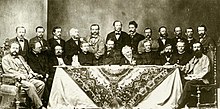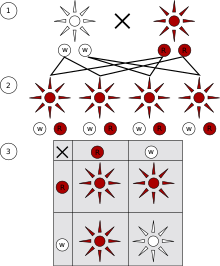Gregor Mendel was a brilliant scientist and an educated monk who achieved historical recognition as the “father” of genetics while serving as an abbot. Although his contemporaries did not acknowledge his studies while he was alive, early 20th-century successors who researched the topic of heredity were able to definitively identify the Augustinian biologist as the founder of all ideas in this field.
Early life and adolescence
The early years of the scientist’s life are not well known. On July 20, 1822, he was born in Heinzendorf, a historical Silesia region that was then part of the Austrian Empire and is today the village of Hynčice in the Czech Republic. Frequently, inaccurate publications list the future monk’s baptism as July 22 rather than his birthdate.
The second child of Anton and Rosina, the peasant couple who also gave birth to daughters Veronica and Theresia. His ancestry was German-Slavic. For more than a century, the Mendel family owned the land where the family now resided. The scientist’s father lived in a house that is now a museum.
He displayed an early love of the natural world. In addition to being a gardener, he was a beekeeper when he was younger. He was a weak youngster growing up, missing many months of school because of illness. He attended the Troppau Gymnasium (now the Czech city of Opava) for six years after completing his schooling at a rural school.
He then studied philosophy and physics for three years at the Olmütz Institute (now the Czech Palacký University in Olomouc), both theoretical and practical. It’s noteworthy to note that Johann Karl Nestler, who was interested in researching the inherited traits of plants and animals like sheep, led the faculty of natural history and agriculture at the same time.
Mendel struggled with financial ruin because he was unable to pay for his schooling. In order to support her brother’s further schooling, Theresia contributed her own dowry. Gregor later paid back the entire loan by providing for his three nephews, who were the offspring of his sister. Afterwards, two of the young men he was guarding became physicians.
Mendel made the decision to become a monk in 1843. This choice was influenced more by the free education that clergymen were entitled to than by the piety of a farmer’s son. He claimed that living as a monk relieved him of his “eternal anxiety about the means of subsistence.” He was given the name Gregor, Gregor Johann Mendel, at the Augustinian Monastery of St. Thomas in Brünn (now Brno, Czech Republic), where he also took the veil. He then started studying at the theological institute. He received his priestly ordination at age 25.
The Scientific
Mendel is a remarkable person who was both a natural scientist and a religious leader. The fact that his field of study later gave rise to a new scientific discipline that disassembled the divine design idea into genes makes the issue all the more poignant. Gregor had an insatiable thirst for information. He was a frequent reader of scholarly works in science and filled in as a teacher substitute at the nearby school. The man failed biology and geology but dreamed of passing the exam to become a teacher.
He was a math and language teacher at the Znojmo Gymnasium in 1849–1851. Later, he relocated to Vienna, where he studied physics under renowned Christian Doppler and natural history under the patronage of Franz Unger, a botanist and pioneer of cytology, at the University of Vienna until 1853.
He was not a licensed specialist, but he taught these courses in the Higher Real School when he returned to Brünn. He attempted to pass the tests once more in 1856 in order to become a teacher, but failed biology this time. The same year, Mendel developed a keen interest in plant hybridization, having previously demonstrated such an interest in studies conducted by scientists in Vienna. Gregor experimented with peas in the monastery garden for seven years, until 1863, and produced discoveries throughout this time.
Although there had been previous research on plant hybridization, Mendel was the first to identify the patterns and organize the key findings that geneticists would utilize up until the 1970s.
More than ten thousand tests used more than twenty different types of peas with different blooms and seeds. An enormous undertaking, given that every pea has to be personally inspected. In order to transmit just one property, namely “wrinkled-smooth” in crossed forms, Gregor looked at around 7,000 peas; the work contained seven such features.
The information he acquired served as the foundation for the theory of heredity, which is the foundation of genetics. In a scientific study titled “Experiments on Plant Hybrids,” which was published in 1865 in one of the Brunn Naturalists’ volumes, he developed the fundamental inheritance patterns that became known as Mendel’s laws.
Gregor ordered several dozen copies of the work and mailed them to well-known botanists of the day because he was certain that the research accomplishments were fundamentally important for the advancement of science. Regretfully, his peers were uninterested in the publishing. The University of Munich professor Karl von Nägeli was the only one to suggest testing the idea on other animals.
Mendel experimented extensively with crossbreeding, using insects and various plants, including his childhood favorite, bees. Regretfully, Gregor felt let down. Coincidentally, the bees and the plant species he had selected shared characteristics of the fertilization process and were capable of parthenogenesis, or the “virgin way” of reproduction. As a result, the results of the pea studies could not be verified.
Much later, in the early 1900s, when several scientists independently expressed the hypotheses that Mendel had developed the century before, his contribution to science was recognized. The year 1923 is commonly recognized as the inception of the field of genetics. The Mendelism plays a major part in it.
Faith
At the age of 21, Mendel made the decision to become a monk in order to solve his financial problems and gain access to knowledge, among other things. Because of the limitations imposed by the route he had chosen, he became celibate and had no idea what a personal life was. As clerics in the Catholic faith are bound by a vow of celibacy, Mendel never married or had children.
He was appointed a priest at the age of 25 at the Augustinian abbey of St. Thomas, the region’s hub of science and culture. Local pupils were under the monks’ supervision, and Abbot Cyril Napp fostered his brethren’s interest in science. Mendel was a favorite instructor and loved working with kids. He carried out his well-known hybridization experiments at the monastery garden.
After his spiritual guide Napp passed away in 1868, Mendel became the abbot of the Starobrnensky (Augustinian) monastery. Large-scale scientific research was discontinued starting in that year, and worries for the entrusted holy site replaced them. While working in administration, Gregor got into a heated argument with the secular authorities about the imposition of higher taxes on religious organizations. Until his passing, he remained in that position.
Demise
At the age of sixty-one, Abbot Mendel passed away from chronic nephritis in 1884. Later, the abbey he worked for nearly 40 years became home to a museum bearing his name. He is buried in Brno.